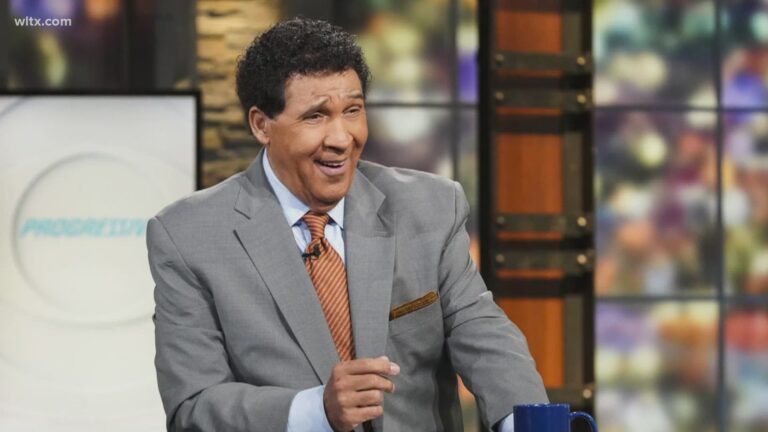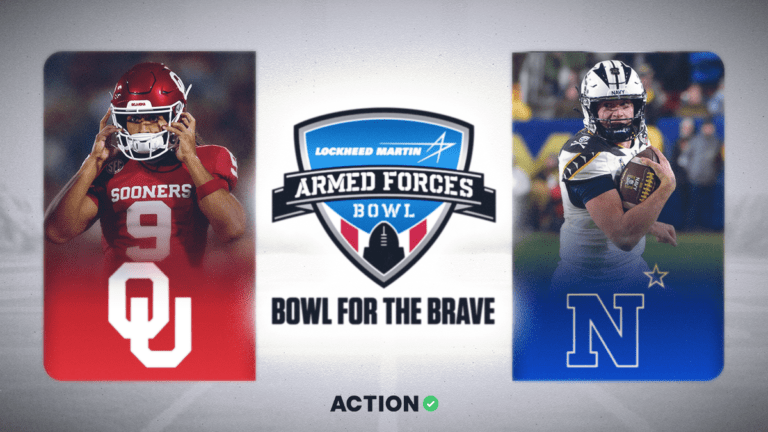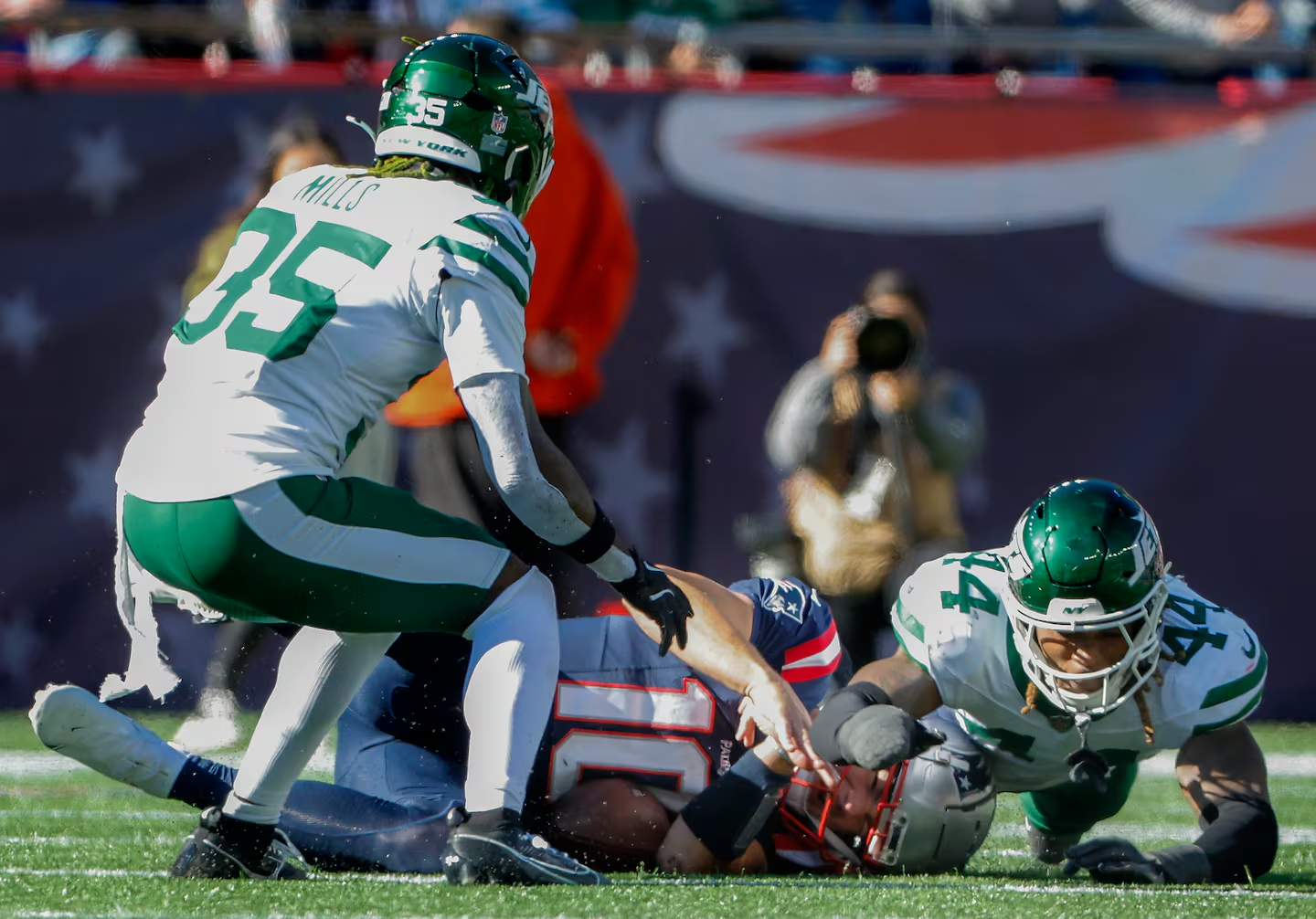
Drake Maye’s Return After a Head Injury: Controversy Surrounding Player Safety in the NFL
Introduction
The spotlight shines on rookie quarterback Drake Maye after a dramatic turn of events in the Week 17 matchup between the New England Patriots and the Los Angeles Chargers. A jarring hit in the first quarter left Maye evaluated for a head injury. Despite the growing emphasis on concussion protocols and player safety in the NFL, he returned to the field shortly thereafter. This incident has sparked heated debates about the balance between competitive spirit and safeguarding athletes’ health.
This article delves into the specifics of the incident, the NFL’s concussion protocol, the medical staff’s decisions, and the broader implications for the league’s commitment to player safety.
(Facebook: Like, X: Follow, Telegram: Join us)
Drake Maye and the Week 17 Incident
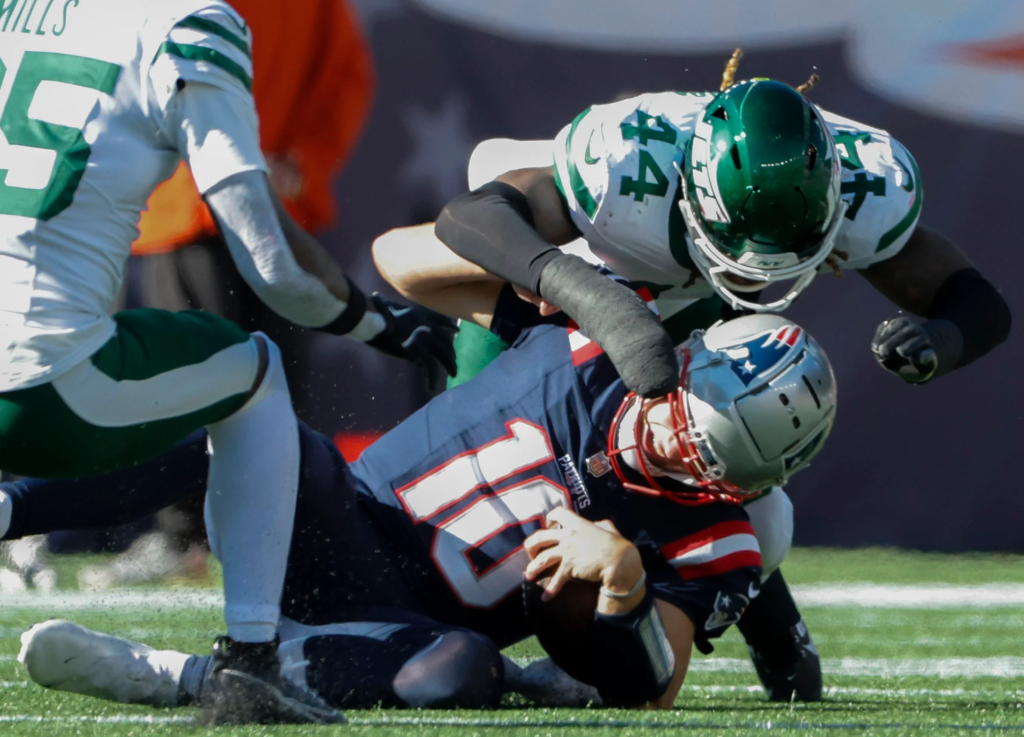
Drake Maye, a promising rookie quarterback for the New England Patriots, has shown resilience and skill throughout his first season. However, his experience against the Chargers took an alarming turn early in the game.
During a 3rd-and-4 play in the first quarter, Maye scrambled to evade defenders but took a hard hit to the head from a Chargers linebacker. He stayed on the ground briefly, sparking immediate concern from teammates and coaches.
Medical staff quickly escorted him off the field, conducting an initial evaluation in the blue medical tent before taking him to the locker room. Maye was subsequently listed as questionable to return.
To the surprise of many, Maye was cleared and returned to the game in the second quarter. With the Patriots trailing 10-0, his presence reignited hope for a comeback. However, his return raised questions about the adequacy of concussion evaluations and the priority placed on player safety.
The NFL’s Concussion Protocol Explained
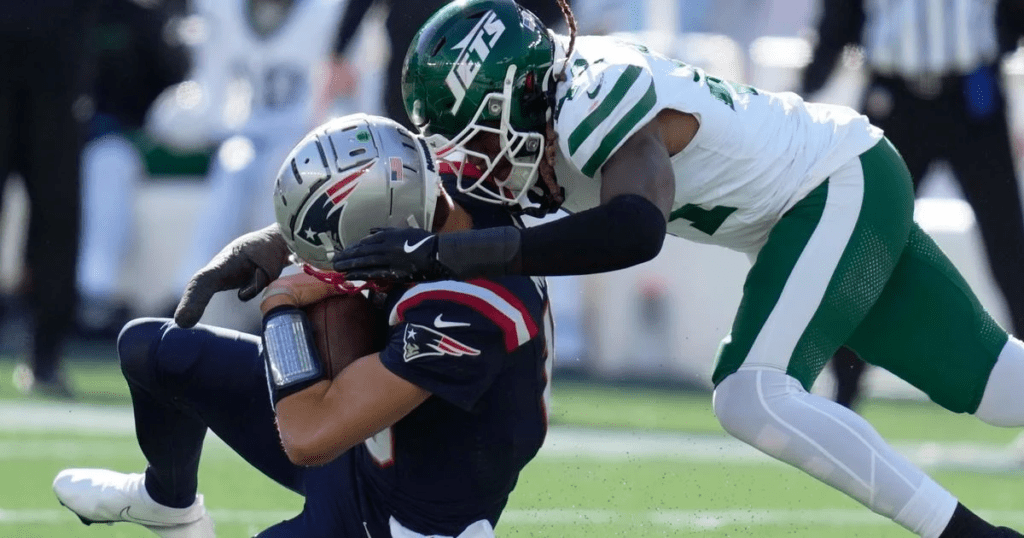
The NFL’s concussion protocol is one of the most stringent in professional sports, developed in collaboration with leading neurologists and medical experts.
Key Steps in the NFL Concussion Protocol:
- Immediate Removal: Any player suspected of having a concussion is removed from the game for evaluation.
- Sideline Examination: Team physicians conduct a sideline assessment, including balance and memory tests, along with a review of video footage of the incident.
- Locker Room Evaluation: If symptoms persist, the player is taken to the locker room for a more comprehensive examination.
- Independent Consultant Clearance: Before returning to play, players must be symptom-free and cleared by both the team’s medical staff and an independent neurological consultant.
While the process appears robust on paper, critics argue that inconsistencies in implementation can undermine its effectiveness.
A History of Head Injuries: Drake Maye’s Case
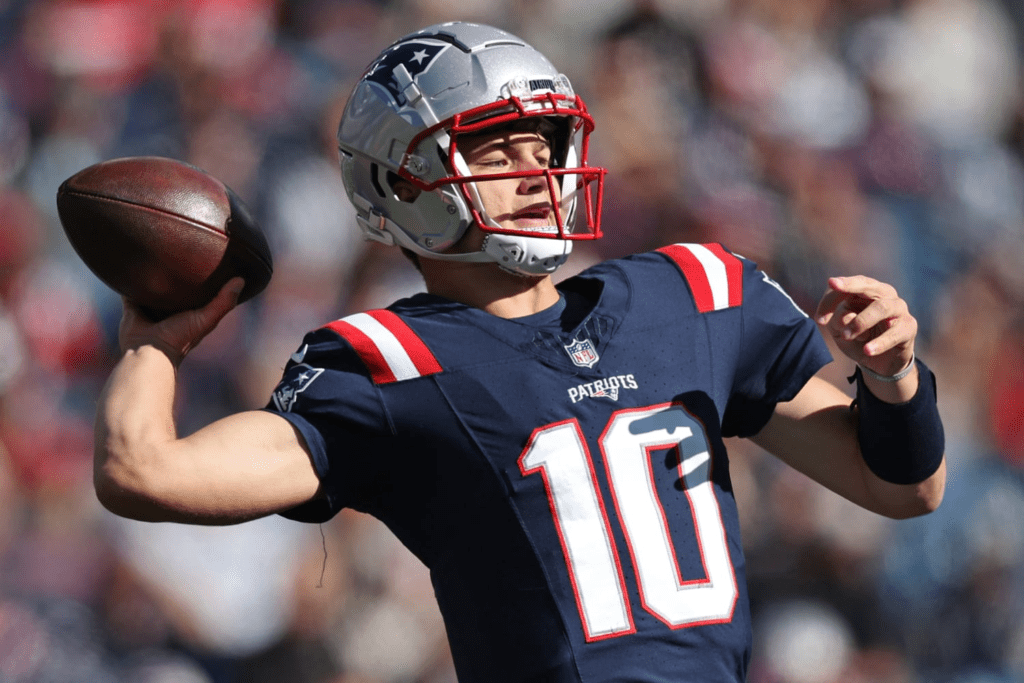
This was not the first time Drake Maye had faced a head injury this season. In Week 8 against the New York Jets, he suffered a concussion following a helmet-to-helmet collision. On that occasion, he was immediately ruled out for the remainder of the game and entered the NFL’s concussion protocol.
Maye’s earlier injury highlights the risks of cumulative head trauma, which can lead to long-term cognitive and physical impairments. Allowing him to return so soon after another potential head injury raised eyebrows among fans and medical professionals alike.
Balancing Player Health and Competitive Goals
Football is a high-stakes sport where players are often pushed to their physical and mental limits. The desire to win can sometimes overshadow concerns about player safety.
Factors Influencing Decisions:
- Pressure to Perform: Teams and players face immense pressure to deliver results, especially in crucial games like Week 17.
- Subjective Evaluations: While the concussion protocol aims to be objective, sideline evaluations can sometimes rely on subjective judgments by medical staff.
- Cultural Factors: The NFL has historically celebrated toughness, often glorifying players who push through injuries.
In Drake Maye’s case, the decision to return may have been influenced by the Patriots’ need to secure a victory and maintain playoff hopes.
Public Reaction and Expert Opinions
The reaction to Drake Maye’s return has been mixed. Fans and analysts alike have voiced concerns about the potential risks he faced.
Supporters’ Perspective:
- Patriots fans applauded Maye’s determination and viewed his return as a testament to his grit and leadership.
- Some argue that if Maye passed all necessary evaluations, the decision to let him play was justified.
Critics’ Concerns:
- Critics emphasize the need to prioritize long-term health over short-term gains.
- Many question whether the league’s concussion protocol is adequately enforced, citing inconsistencies in its application.
Neurologists have weighed in, warning of the dangers of repeated head trauma and the potential for chronic traumatic encephalopathy (CTE), a degenerative brain disease linked to concussions.
The NFL’s Commitment to Player Safety
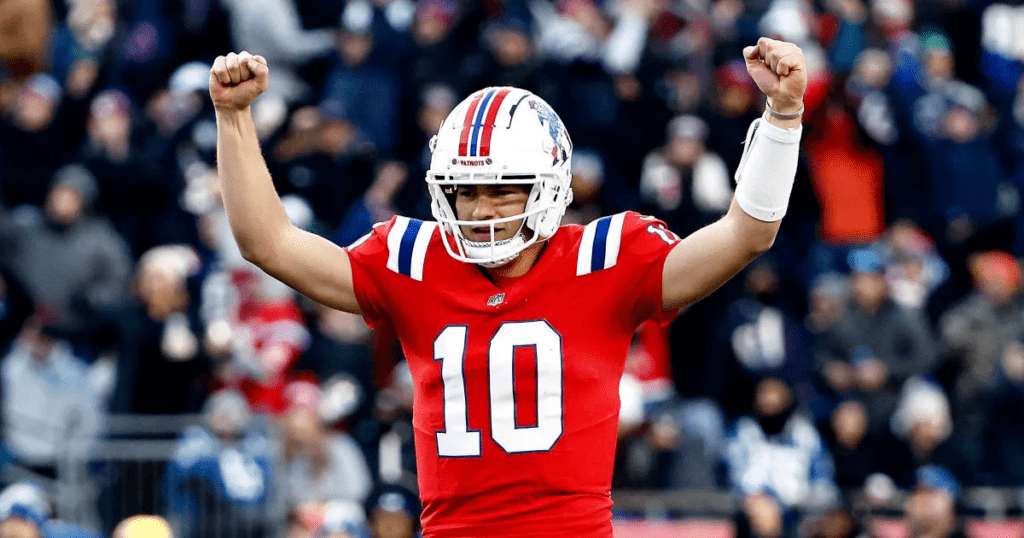
The NFL has made significant strides in improving player safety over the past decade. Changes to the rules, such as banning helmet-to-helmet hits and implementing stricter concussion protocols, reflect a growing awareness of the risks associated with head injuries.
Recent Developments:
- Introduction of advanced helmet technology designed to reduce the impact of collisions.
- Increased use of video review to identify potential injuries in real-time.
- Enhanced training for medical staff to recognize and respond to head injuries.
Despite these efforts, incidents like Drake Maye’s return highlight the challenges of enforcing these measures consistently.
The Role of Independent Neurological Consultants
One of the most debated aspects of the NFL’s concussion protocol is the role of independent neurological consultants (INCs). These specialists are tasked with providing an unbiased assessment of a player’s condition.
Potential Issues:
- Conflicts of Interest: While INCs are independent, they are hired by the league, leading to potential concerns about impartiality.
- Pressure to Expedite Evaluations: In the fast-paced environment of an NFL game, INCs may face pressure to make quick decisions.
In Drake Maye’s case, it remains unclear whether an INC was involved in the decision to allow his return.
The Future of Player Safety in the NFL
The NFL must continue to prioritize player safety, not only for the athletes’ well-being but also to maintain public trust in the sport.
Potential Solutions:
- Stricter Enforcement: Ensuring that all teams adhere to the concussion protocol without exceptions.
- Enhanced Technology: Using sensors and AI to detect potential injuries in real-time.
- Cultural Shift: Changing the narrative around toughness to celebrate players who prioritize their health.
FAQs
What happened to Drake Maye during the Chargers game?
Drake Maye sustained a head injury in the first quarter after a hard hit. He was evaluated and returned to play in the second quarter, sparking controversy.
What is the NFL’s concussion protocol?
The NFL’s concussion protocol involves immediate removal from play, sideline and locker room evaluations, and clearance by an independent neurological consultant.
Has Drake Maye experienced head injuries before?
Yes, he suffered a concussion earlier in the season during Week 8 against the Jets.
Why is there controversy over Maye’s return?
Many believe his return may have prioritized game performance over long-term health, raising concerns about the adequacy of the NFL’s concussion protocol.
What steps can the NFL take to improve player safety?
The NFL can enforce stricter adherence to protocols, invest in advanced injury detection technology, and promote a culture that values health over toughness.
How does repeated head trauma affect players?
Repeated head trauma can lead to long-term issues such as chronic traumatic encephalopathy (CTE), which causes cognitive and physical impairments.
Conclusion
Drake Maye’s return after a head injury during the Patriots-Chargers game has reignited the debate over player safety in the NFL. While the league has made progress in addressing the risks associated with head trauma, incidents like this underscore the need for stricter enforcement and continued innovation.
Ultimately, the NFL must ensure that every player’s health and future are safeguarded, proving that safety and competition can coexist on the gridiron.
Do Follow For More News : DailyFore


